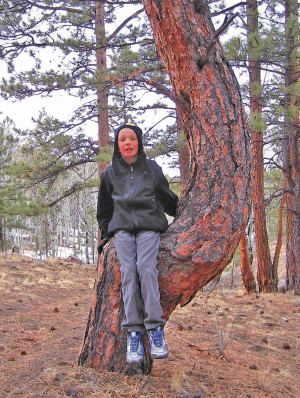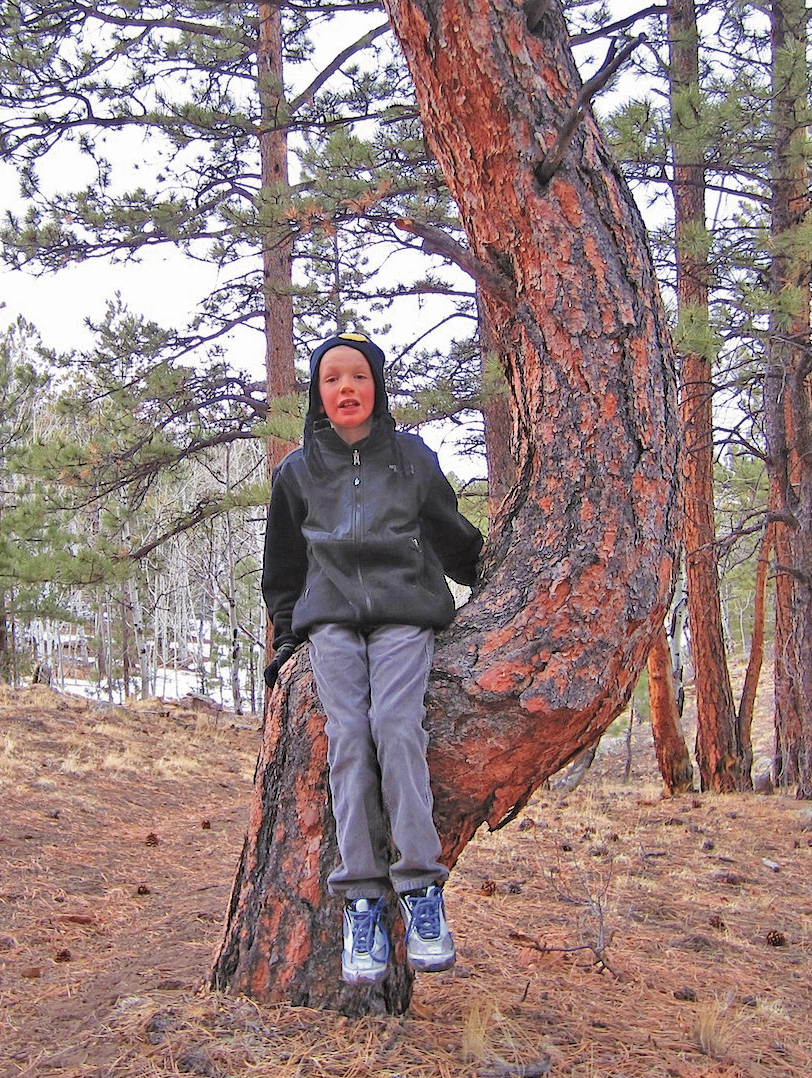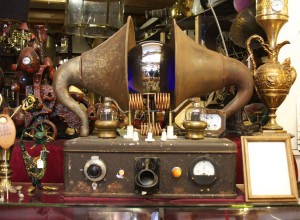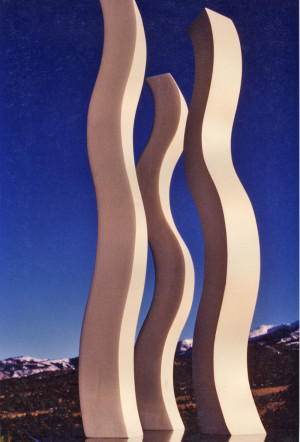By Hal Walter
A recent writing assignment had me exploring historical points in my immediate geographical area, and it occurred to me, as it has many times over the years, how many people have made either permanent or temporary homes in this area long before we arrived with our four-wheel-drives, heated homes and Internet connections.
My neighbor Gary Ziegler, an archaeologist by trade and owner of Bear Basin Ranch, has recently been investigating the occurrence of “culturally modified” trees on his property and the surrounding area. Ziegler has made a career out of finding and unearthing lost Inca cities in Peru, but it’s possible another history lesson has been right under his nose since he bought Bear Basin in 1972.

Ziegler believes these trees point to a significant gathering point for Native American tribes, possibly going back as far as 5,000 to 6,000 years.
Many of these trees are located near the Bear Basin “Cowboy Camp” and also around an area known locally and on topo maps as “Dry Lake,” due to the shallow depression that tends to fill with water after heavy spring snows and big summer thunderstorms. The “lake” is actually an ancient volcanic sinkhole or vent, likely associated with the Bassick Dike that left much of the region heavily mineralized, fueling the gold and silver rush that put Silver Cliff, and later, Westcliffe, on the map. Over the millennia the resulting cooling and erosion left a depression, oddly forming a small lake with no outlet near the head of three major water drainages.
It’s possible this geological anomaly has something to do with a spiritual significance of the area to these earliest residents. That, coupled with a good water source at a nearby spring and vast herds of elk and bison in the adjacent grassy parks, could have been a draw for the nomadic Ute and Jicarilla Apache, who would have been at the northernmost of their range. Dry Lake and the surrounding area also affords views of the Sangre de Cristo Range and Pikes Peak, a sacred mountain of the Ute. Other indigenous cultures going back thousands of years also likely made camp here.
My first notice of what is possibly one of these trees was about a year ago when I was scouting routes on Bear Basin for the Hardscrabble Mountain Trail Run. (Commercial Break: This year’s race, by the way, is scheduled June 1 and includes 5K, 10K and 45K runs.) I had noticed a tree with a trunk that took a 90-degree turn for a short distance, then took another turn upward though not straight upward. It looked almost like a chair along the trail and I took a photo of my son Harrison sitting in it. It never occurred to me the tree may have had help growing that way. Ultimately the route I chose for the race did not pass that particular tree, though the route does pass within a stone’s throw of others that appear to be modified. Oddly, the race itself ended up being centered right at Dry Lake.
Meanwhile, Gary had met Western historian John Anderson, a former El Paso County sheriff, who is conducting research for a book he is writing and is in contact with the Southern Ute Council regarding this topic. Gary invited him to the ranch to inspect some of the trees, and they identified many that have possibly been modified by earlier residents.
Now that I am aware of the phenomenon, more and more of these trees have caught my attention during my travels on the trails around the ranch. In particular, Bradbury Ridge, which runs from near where I live on the eastern edge of the ranch several miles to the west, holds many trees that appear to have been altered in some fashion, or possibly planted.
While in many parts of the country, culturally modified trees are often purely directional indicators, that doesn’t appear to be so much the case here, though some do appear to have branches that point in a particular direction. Ziegler believes the trees, all pines, seem more commonly altered to form medicine trees and ceremonial or prayer trees. Some of the trees seem to have been planted in odd places that trees would not typically grow or live without some care. Many seem to be associated with rocks or outcroppings, leading Ziegler to believe they may serve to mark grave sites since the Ute favored crevice burials of their dead.
In addition, Ziegler has found grinding stones, projectile points and other artifacts. He’s also identified the outlines of stone “platforms” or foundations possibly for teepees and rectangular shelters built around modified trees.
One wonders what other artifacts were found by the white settlers who arrived more closely behind the Ute and Apache. The Indians may have acquired horses from Europeans as early as the late 1600s, and were likely followed here by trappers and eventually prospectors in the late 1800s. By 1870, Rosita was founded as a mining camp, and two stage roads intersected on what is now Bear Basin Ranch. By 1920 the Terrible Mine was in full swing just a few miles down the road, Louie Annin was farming potatoes and oats on the north end of Bear Basin, and some early day hucksters had built the bogus Prairie Dog Mine and an entire accompanying small town in order to bilk investors just a half-mile from Dry Lake.
Many indicators of these early white settlers remain visible to this day – mine pits and tailings, a rusty truck body, cabins, and various smaller metal objects such as tin cans and hardware. Only eyes that are tuned to the very subtle may see the other possible reminders of those who arrived here before them.
Hal Walter writes and edits from the Wet Mountains. You can keep up with him regularly at his blog: www.hardscrabbletimes.com.




I’ve seen a few trees like this around the Wet Mountain Valley before..even up in the high country. Ever see them at higher altitudes up in the Sangres? I’m blanking on what trail I was on, I think I took a photo I’ll have to look to see if I can find it.
Hal, thank you so much for that very interesting article! I just love the history and lore of the area. Can’t wait to come back! Thanks again for your tireless efforts and wonderful stories!